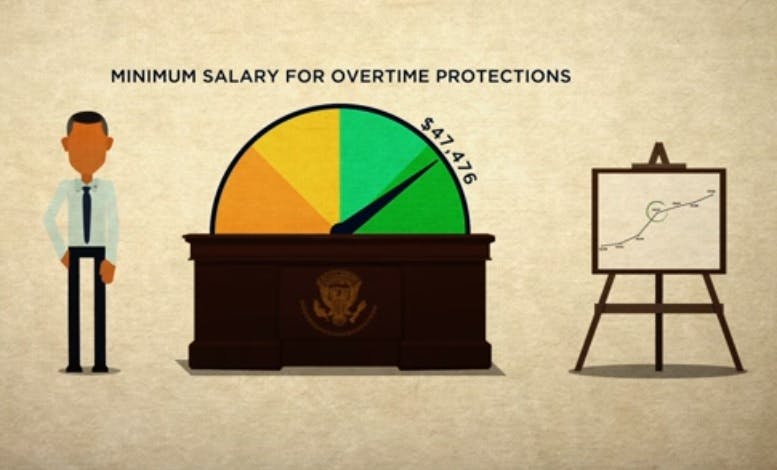The Department of Labor unveiled its much anticipated new overtime rule Tuesday night, declaring that 4.2 million more workers will soon have to be paid overtime.
The rule, an update to the Fair Labor Standards Act, will officially be announced tomorrow, starting a countdown to December 1 when companies must begin paying overtime for many of their now-exempt workers. Here are the highlights:
- Employers must pay overtime for work beyond 40 weekly hours to all workers earning up to $913 per week or $47,476 annually for a full-year worker.
- The new threshold for highly compensated employees (HCE) is $134,004.
- The salary and compensation levels will be updated every three years.
- Bonuses and incentive payments count toward up to 10% of the new salary level.
- No changes were made to the “duties test.”

What this means is that individuals previously classified as exempt because they earned more than $455 a week (but not more than $913 weekly) and performed work defined as executive, administrative, or professional will now, essentially, no longer be classified as exempt. They must be paid overtime. Those earning more than the maximum, must still meet the duties test to be considered exempt.
The annual cost to companies is estimated to be $1.2 billion, or $12 billion over 10 years.
SHRM’s CEO and president, Henry G. (Hank) Jackson, expressed disappointment with the DOL’s so-called Final Rule. In a prepared statement release Tuesday night, he said, “The salary threshold — although slightly less than originally proposed — will mean many employees will lose the professional ‘exempt’ status that they have worked hard for and the flexibility from rigid schedules that they care deeply about.
“While changes in regulations were meant to benefit employees, a change of this magnitude will do the opposite. There likely will be fewer opportunities for overtime pay as employers are forced to restructure their compensation and staffing.”
The White House issued a statement noting, “The share of full-time workers qualifying for overtime based on their salaries has plummeted from 62% in 1975 to 7% today — even though the protections are more important than ever.”
The statement also says, “Increasing overtime protections is another step in the President’s effort to grow and strengthen the middle class by raising Americans’ wages.”
